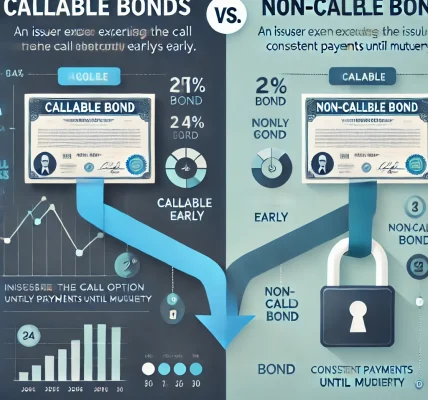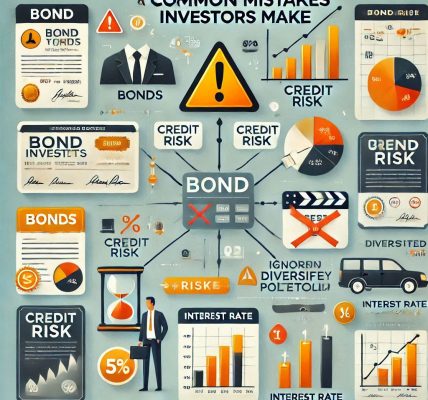Introduction: When it comes to building a steady source of passive income, bonds are a reliable and often overlooked investment tool. Unlike stocks, which can be volatile, bonds offer fixed interest payments, making them an attractive option for investors seeking stability and predictable returns. In this guide, we will walk you through how bonds can help you generate passive income and the steps to incorporate them into your investment strategy.
What Are Bonds and How Do They Work? Before we dive into how bonds generate passive income, it’s important to understand what bonds are. In simple terms, a bond is a debt instrument issued by governments, municipalities, or corporations. When you buy a bond, you are lending money to the issuer in exchange for periodic interest payments (coupons) and the return of the principal at maturity.
Types of Bonds That Can Generate Passive Income:
Not all bonds are the same. To maximize passive income, it’s important to choose the right type of bond. Here are some common bond types used for generating passive income:
- Government Bonds:
- These are issued by national governments and are considered low-risk investments. Treasury bonds, for instance, pay fixed interest over a long period, making them ideal for generating passive income.
- Municipal Bonds:
- Issued by local governments, these bonds often offer tax-free interest income. Municipal bonds can be a great choice for investors looking to minimize their tax liabilities while generating passive income.
- Corporate Bonds:
- Corporate bonds are issued by companies to raise capital. While they offer higher interest rates than government bonds, they come with higher risk. However, for those willing to take on more risk, they can provide higher returns.
- High-Yield Bonds:
- These are bonds issued by companies or governments with lower credit ratings. They offer higher interest rates to compensate for the increased risk. High-yield bonds can be a good option for aggressive investors seeking higher passive income.
How Bonds Generate Passive Income: The primary way bonds generate passive income is through interest payments, known as coupon payments. Here’s a step-by-step breakdown of how the process works:
- Purchase of Bonds: When you purchase a bond, you essentially lend money to the issuer (government or corporation). The terms of the bond will outline the amount you invested (principal), the interest rate (coupon rate), and the frequency of interest payments (usually quarterly, semi-annually, or annually).
- Regular Interest Payments: As the bondholder, you will receive periodic interest payments from the issuer. These payments provide a reliable source of passive income, which can be reinvested or used to meet your financial goals.
- Bond Maturity: Once the bond reaches its maturity date (typically 1 year to 30 years), the issuer repays the principal amount. During the life of the bond, you have been earning passive income through regular interest payments, and at maturity, your original investment is returned.
Benefits of Using Bonds for Passive Income:
- Predictable Cash Flow: One of the biggest advantages of bonds is the predictable cash flow from interest payments. This makes bonds ideal for investors looking to generate steady income, especially those in retirement or individuals who prefer less volatility.
- Lower Risk: Bonds, especially government and high-grade corporate bonds, are less volatile than stocks. While stocks can fluctuate dramatically, bond prices tend to be more stable, and investors can count on receiving interest payments as long as the issuer does not default.
- Diversification: Bonds offer a way to diversify your investment portfolio, reducing overall risk. They typically behave differently than stocks, providing balance to a portfolio that includes equities, real estate, and other assets.
- Tax Advantages: Some bonds, such as municipal bonds, offer tax-exempt interest income, which can be beneficial for high-income earners looking to minimize taxes on their passive income.
How to Maximize Passive Income with Bonds:
- Choose Bonds with Higher Yields: To increase your passive income, look for bonds that offer higher coupon rates. Corporate bonds, high-yield bonds, and certain international bonds may offer higher returns. However, remember that higher yields usually come with higher risk.
- Ladder Your Bond Investments: A bond ladder involves purchasing bonds with different maturity dates. As each bond matures, you reinvest the principal into a new bond. This strategy helps ensure a steady stream of income and reduces the impact of interest rate fluctuations.
- Reinvest Interest Payments: Rather than spending the interest income from your bonds, consider reinvesting it in additional bonds or other investments. This compounding strategy can significantly increase your returns over time.
- Consider Bond Funds: For a more diversified approach, consider investing in bond mutual funds or exchange-traded funds (ETFs). These funds pool money from multiple investors to buy a variety of bonds, offering diversification and professional management.
Risks to Consider: While bonds are generally considered safer than stocks, they still come with risks, such as:
- Interest Rate Risk: When interest rates rise, bond prices typically fall. This can impact the market value of your bond holdings if you need to sell them before maturity.
- Inflation Risk: If inflation rises faster than the bond’s interest rate, the real value of your income decreases, reducing the purchasing power of your passive income.
- Credit Risk: Bonds issued by corporations or governments with poor credit ratings carry the risk of default, meaning the issuer might not be able to make the promised interest payments or repay the principal.
Conclusion: Bonds are a powerful tool for generating passive income, offering stability, predictable returns, and diversification for your investment portfolio. Whether you’re a retiree seeking a reliable income stream or an investor looking to balance risk, bonds can play a critical role in achieving your financial goals. As with any investment, it’s important to understand the risks involved and consult with a financial advisor to tailor a bond strategy that aligns with your needs.




